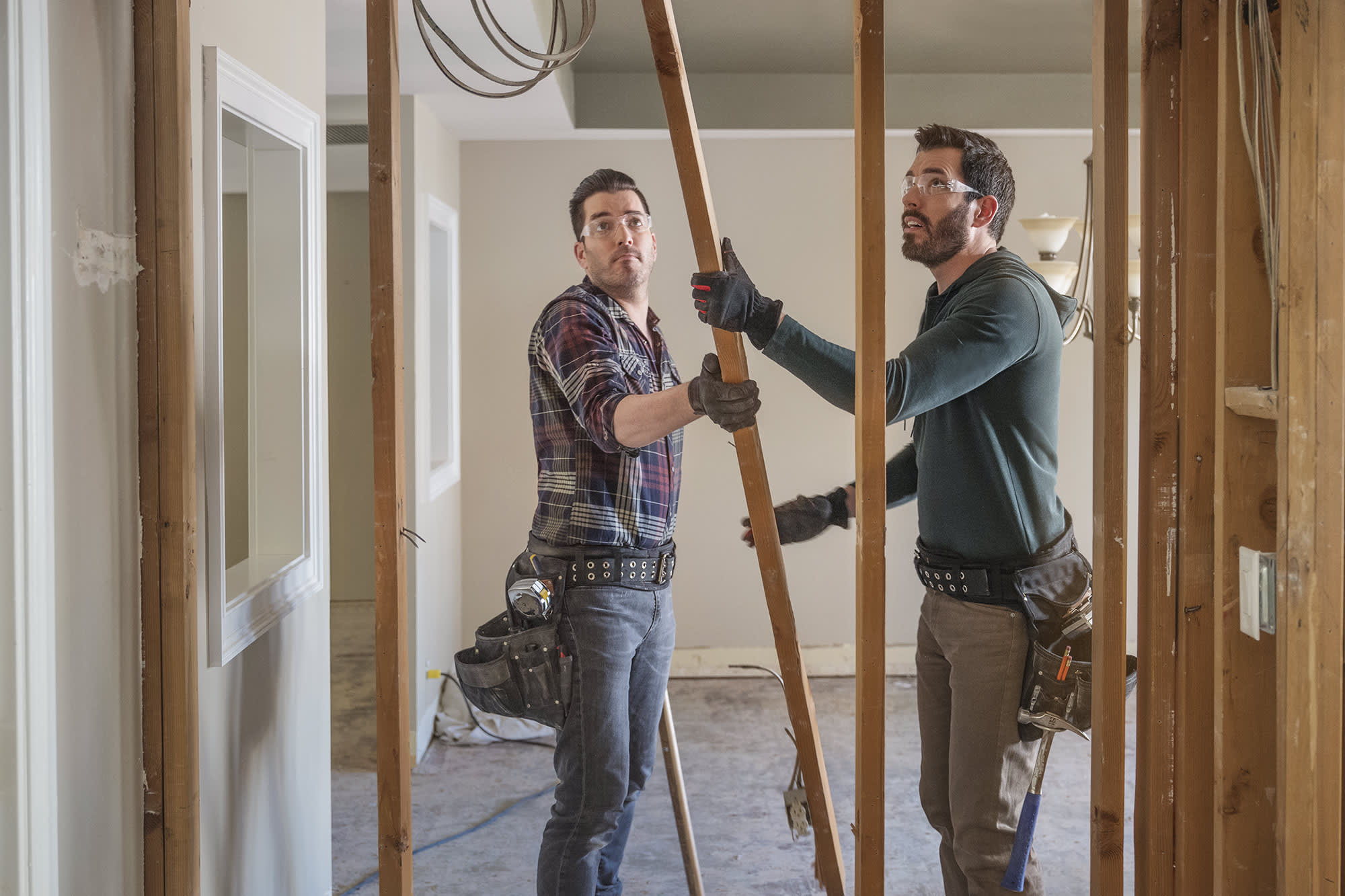When it comes to renovating your home, the last thing you want is surprises.
So before you start swinging a hammer, it’s important to take steps that can help you avoid costly blunders, according to Drew and Jonathan Scott, the stars of HGTV’s “Property Brothers.”
“[The] No. 1 common mistake that so many people make when they’re renovating their house [is thinking] ‘I can take this whole thing on myself,'” said Drew, a real estate agent.
“If you’ve never been a general contractor, and you’re doing a major renovation, and now you want to be your own general contractor, first red flag. Probably a problem,” added Jonathan, a licensed contractor.
That doesn’t necessarily mean that you have to hire a professional for everything.
Instead, think about your comfort zone. If a project is outside of it — or requires permits or a licensed professional, get outside help, said Jonathan.
We’re trying to make people… become realistic about what their demands are and what their budgeting is.
Drew Scott
Co-host, “The Property Brothers”
Home renovations are on an upswing, thanks, in part, to the housing shortage and low interest rates.
In fact, 8 in 10 people anticipate taking on a home improvement project in the next year, according to a recent survey by Chase Home Lending. More than 70% plan to do at least some of the work without professional help, the poll found. The bank surveyed 1,000 U.S.-based homeowners in September.
Not getting the right financing
Another big mistake people tend to make is not having all of their finances in a row before undertaking a big renovation, the Scott brothers said.
You may not need to take out a loan to do small home projects around the house. However, unless you have money saved up, you’ll have to find the right way to pay for a larger renovation.
Of those surveyed by Chase, 21% said they plan to spend more than $25,000.
“Some people will take a major renovation on and put it on their credit card,” said Jonathan.
“Terrible idea,” added Drew.
Instead, they suggest talking to your lender to find out what loans are available.
Those options include things such as cash-out refinancing, which is gaining in popularity, according to Chase. The bank has seen a nearly 20% increase in homeowners refinancing their mortgage to take advantage of the equity in their home.
“With the low-rate environment where it is today, many people are … taking a look at that project that they’ve been wanting to do over the last five years,” said Amy Bonitatibus, chief marketing and communications officer for Chase Home Lending. “You’re not going to find a better time.”
More from Invest in You:
Many millennials say buying a home may finally be within reach
Your side hustle may be at risk — here is how to protect it
This millennial is trying to turn a ghost town into a luxury destination
Other options include a home equity loan or a home equity line of credit, which allows you to take out equity on your house in addition to your existing mortgage.
Home equity loans are a set amount of cash distributed at one time and typically offer fixed rates. HELOCS, on the other hand, are a revolving source of funds that you can tap into at any given time, up to your approved amount. They also have variable interest rates — which means they can rise throughout the duration of the loan.
Once a popular option among homeowners leading up to the financial crisis, balances on HELOCS have been declining since 2009, according to the New York Federal Reserve.
Not being realistic
It’s also important to be realistic about what the renovations will actually cost you — and to figure it out before you try to secure financing.
“You need to know the scope of the work that you’re taking on,” Drew said.
“If you go through all those finances and then you don’t have enough to finish the project because you didn’t budget properly, you’re in a hard spot.”
You should also be mindful when it comes to deciding what needs improvement so that you don’t go overboard.
“Focus on the areas that are really going to help your lifestyle,” Jonathan said. “Every family has a different problem with a home that needs to be fixed.”
Not having a contingency
Remember, things don’t always go as planned. So even after you make up a budget for the project, add more money as a contingency.
The Scott brothers have never added less than 10% of the provisional budget as a cushion. Increase the amount from there if the home or area looks like it may have some problems, they advise.
“We’re sort of like home renovation therapists,” Drew said. “We’re trying to make people … become realistic about what their demands are and what their budgeting is.”
CHECK OUT: How to get Costco savings without buying the $60 membership via Grow with Acorns+CNBC.
Disclosure: NBCUniversal and Comcast Ventures are investors in Acorns.
